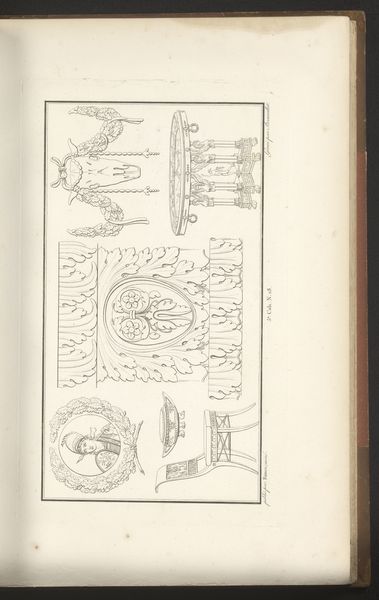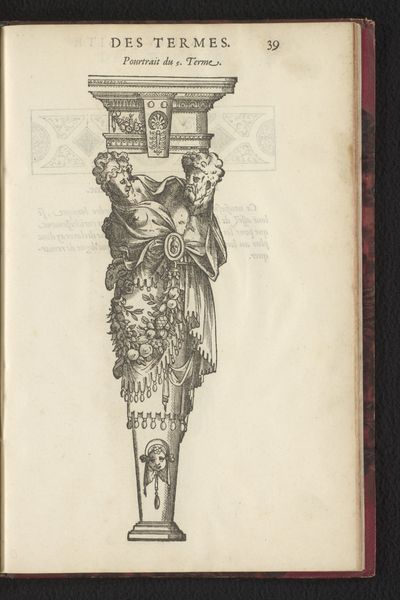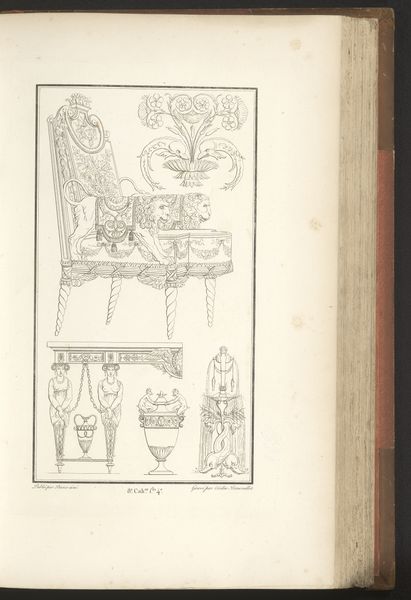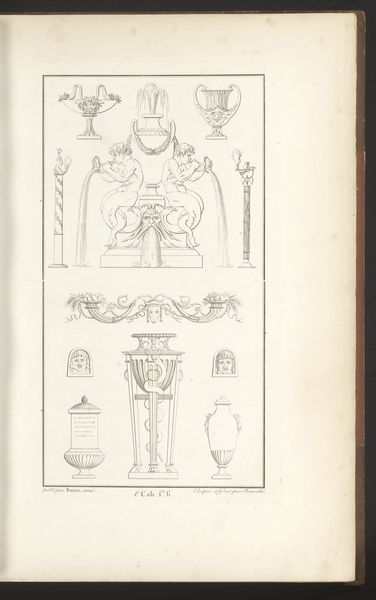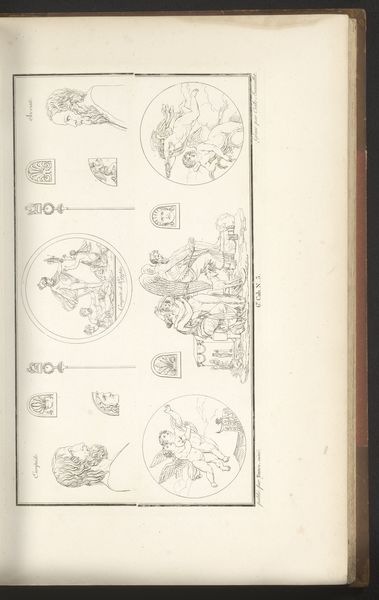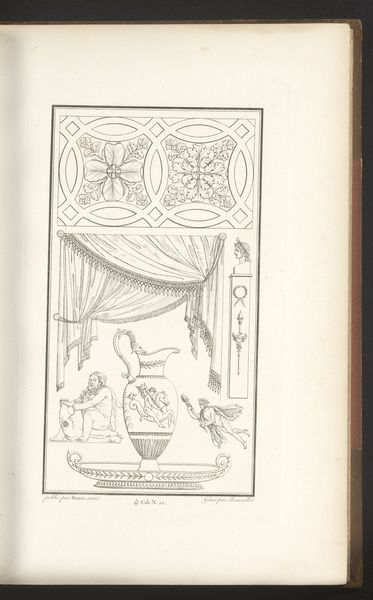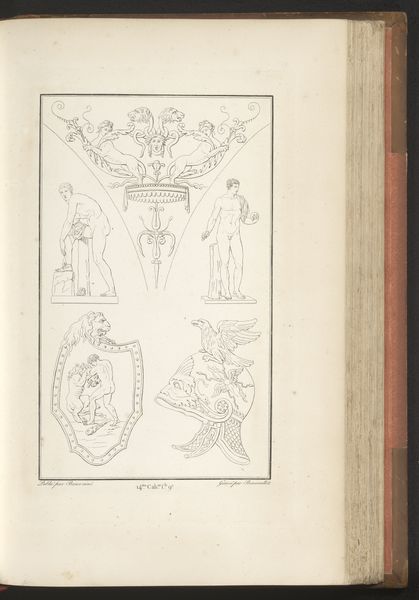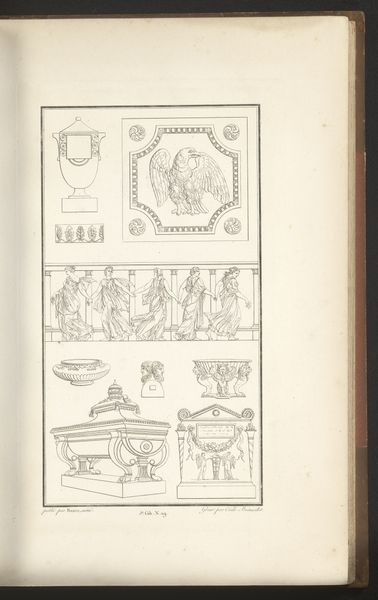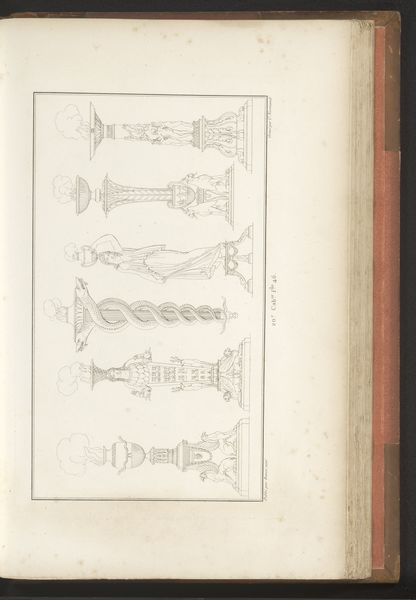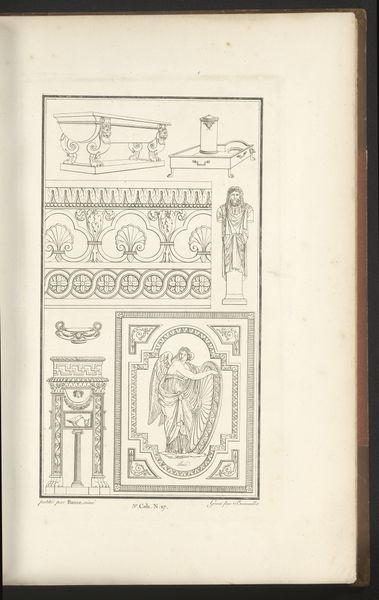
drawing, paper, ink
#
drawing
#
pen drawing
#
figuration
#
paper
#
ink
#
classicism
#
ancient-mediterranean
#
history-painting
Dimensions: height mm, width mm
Copyright: Rijks Museum: Open Domain
Editor: This is "Kuras," a drawing from 1820 rendered in ink on paper. It seems to depict a Roman cuirass or breastplate, complete with intricate scenes and accompanying pottery. The stark lines give it a rather clinical feel, almost like an archaeological record. What stands out to you about this piece? Curator: What interests me here is how this image engages with the visual language of power and empire. Think about it: this isn't just a depiction of armor, but an artifact representing an era of immense political and social control. The artist’s choice to present it in such detail invites us to consider the narratives that are literally inscribed on this symbol of authority. Editor: So, the decorations on the cuirass are telling a story, too? Curator: Precisely! What stories do you see there? Think about the figures represented, the composition, and how they might reflect the values or ideologies that this armor, and by extension the Roman Empire, stood for. Are these images reinforcing or challenging established hierarchies? What kind of a person would have had the power to use these images? Editor: Well, I notice scenes with what appear to be mythological figures. Perhaps they’re meant to legitimize power by linking it to a divine origin. And then there’s the depiction of hunting - maybe to evoke themes of control? Curator: Absolutely! It is all carefully considered. It's crucial to question who gets to narrate history and whose stories are omitted. Consider how this image may idealize a particular vision of the past. What are the implications for us now as we look back at such potent symbolism? Editor: It definitely changes my perspective knowing the artist created it almost as an itemized illustration, opening my eyes to see the piece in its own time, while realizing the continuing impacts in our time. Curator: Exactly. Art like this compels us to critically examine the legacy of power structures and their lasting impact on contemporary society. By unraveling these historical narratives, we become better equipped to challenge prevailing power dynamics today.
Comments
No comments
Be the first to comment and join the conversation on the ultimate creative platform.
